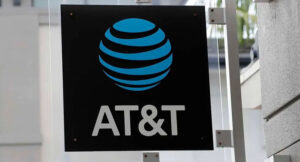The hospital bed market has been witnessing steady growth, propelled by the rising prevalence of chronic diseases, an aging population, and the increasing number of hospital admissions worldwide. Hospital beds play a critical role in ensuring patient comfort, facilitating medical procedures, and supporting recovery. With the healthcare sector emphasizing better patient care and advanced treatment facilities, the demand for modern, multifunctional hospital beds has escalated significantly. According to Persistence Market Research, the global hospital bed market is projected to reach USD 5.91 billion by 2032, growing at a CAGR of 5.7%. This report explores the factors driving the market, key trends, challenges, opportunities, and future outlook for the hospital bed industry.
Hospital beds are specialized beds designed to enhance the comfort, safety, and care of patients during their stay in healthcare facilities. These beds come with adjustable height, head, and foot sections, and are often equipped with advanced features such as electronic controls, side rails, and integrated monitoring systems. The increasing focus on improving patient outcomes and the rising adoption of healthcare technologies have significantly influenced the development and deployment of innovative hospital bed solutions.
Key drivers of market growth
Rising healthcare expenditure: Increasing investments in healthcare infrastructure by governments and private entities worldwide are driving the demand for advanced hospital beds equipped with modern features.
Aging population: The growing geriatric population, particularly in North America, Europe, and parts of Asia-Pacific, has led to higher hospitalization rates, boosting the need for specialized beds with enhanced safety and comfort features.
Surge in chronic diseases: The rising prevalence of chronic conditions such as diabetes, cardiovascular diseases, and respiratory disorders has escalated hospital admissions, creating a steady demand for hospital beds.
Technological advancements: Innovations such as smart beds integrated with sensors for monitoring vital signs, pressure redistribution mattresses, and automated bed positioning systems are transforming the hospital bed market.
Increased focus on infection control: The Covid-19 pandemic underscored the importance of infection control in healthcare settings, driving the demand for beds with antimicrobial surfaces and easy-to-clean designs.
Rising number of hospitals and ICU units: Expansion of healthcare facilities, especially in emerging markets, coupled with the establishment of new intensive care units (ICUs), is significantly contributing to market growth.
Key types of hospital beds
Manual beds: Operated without electrical assistance, these beds are cost-effective and commonly used in smaller healthcare facilities or settings with limited budgets.
Semi-Electric Beds: Feature both manual and electric controls, allowing adjustments for height and head or foot positioning, providing a balance between functionality and cost.
Electric beds: Fully automated with electronic controls for all adjustments, electric beds are preferred in intensive care units and for long-term patient care due to their ease of use and enhanced comfort.
Bariatric beds: Specifically designed for overweight and obese patients, these beds have a higher weight capacity and wider dimensions to ensure comfort and safety.
Pediatric Beds: Customized for children, featuring safety rails and specific dimensions, ensuring safety and comfort for younger patients.
Specialty beds: Include air-fluidized beds, low air loss beds, and rotational beds designed to prevent bedsores, manage pressure ulcers, and improve patient outcomes.
Technological advancements in hospital beds
Smart beds: Integrated with sensors for monitoring patient movement, heart rate, and respiratory patterns, smart beds provide real-time data to healthcare providers, enhancing patient management.
Automated bed controls: Features such as remote control adjustments for height, tilt, and recline positions simplify caregiving and enhance patient comfort.
Pressure redistribution technology: Advanced mattresses with pressure redistribution capabilities help prevent bedsores in bedridden patients.
Integrated monitoring systems: Hospital beds equipped with monitoring systems can alert caregivers to changes in a patient’s condition, reducing the risk of complications.
Hygienic and antimicrobial surfaces: Beds designed with antimicrobial coatings and easy-to-clean materials address infection control concerns effectively.
Challenges facing the hospital bed market
High costs: Advanced hospital beds with smart technologies involve substantial costs, limiting their adoption in resource-constrained healthcare facilities.
Stringent regulatory requirements: Compliance with international standards and certifications for safety and quality can be cumbersome for manufacturers.
Maintenance and durability: Ensuring the longevity and maintenance of technologically advanced beds poses a challenge for healthcare facilities.
Limited adoption in developing regions: The high cost and lack of adequate healthcare infrastructure in emerging markets hinder the widespread adoption of advanced hospital beds.
Supply chain disruptions: The Covid-19 pandemic highlighted vulnerabilities in supply chains, affecting the timely delivery and manufacturing of hospital beds globally.
Opportunities for market expansion
Home healthcare: The rising preference for home-based care, particularly for elderly and chronic disease patients, presents significant growth opportunities for hospital bed manufacturers.
Growing demand for ICU beds: The surge in ICU admissions due to pandemics and critical illnesses has amplified the demand for intensive care beds with advanced life support features.
Public-private partnerships: Increasing collaborations between governments and private healthcare providers to expand hospital infrastructure are likely to boost the hospital bed market.
Focus on customization: Customizable hospital beds that cater to specific patient needs and medical conditions are gaining popularity.
Sustainability and green initiatives: Growing emphasis on eco-friendly materials and energy-efficient hospital equipment is opening new avenues for market players.
Regional insights
North America: Dominates the hospital bed market due to high healthcare spending, the presence of major market players, and increasing adoption of advanced healthcare technologies.
Europe: Witnesses substantial growth driven by a well-established healthcare infrastructure and rising geriatric population.
Asia-Pacific: Expected to exhibit the fastest growth owing to increasing healthcare investments, a rapidly aging population, and rising hospital admissions.
Latin America and Middle East & Africa: Improving healthcare infrastructure and government initiatives to expand hospital facilities are driving market growth in these regions.
Impact of Covid-19 on the hospital bed market
Surge in Demand for ICU Beds: The Covid-19 pandemic significantly increased the demand for ICU and ventilator-equipped beds globally.
Focus on Infection Control: Healthcare facilities prioritized hospital beds with antimicrobial and easy-to-sanitize features to minimize infection risks.
Supply chain challenges: Lockdowns and trade restrictions led to supply chain disruptions, impacting the production and delivery of hospital beds.
Government initiatives: Governments across the globe ramped up healthcare infrastructure and procurement of hospital beds to tackle the pandemic effectively.
Future outlook
Increased Adoption of Smart Beds: The integration of AI and IoT in hospital beds is expected to become mainstream, enhancing patient monitoring and care efficiency.
Focus on Home Care: The rising trend of home healthcare is likely to drive demand for portable and easy-to-operate hospital beds.
Sustainability in hospital equipment: Growing awareness about sustainable healthcare practices is expected to drive innovations in hospital bed manufacturing.
Technological advancements: Enhanced functionalities such as wireless monitoring, remote control, and pressure management are expected to become standard features in hospital beds.
Conclusion
The hospital bed market is poised for significant growth in the coming years, driven by rising healthcare needs, advancements in technology, and an aging population. As healthcare facilities continue to focus on enhancing patient care and safety, the demand for modern, feature-rich hospital beds will remain strong. Manufacturers must invest in innovation, sustainability, and affordability to tap into emerging opportunities and maintain a competitive edge in this evolving market landscape. Persistence Market Research









